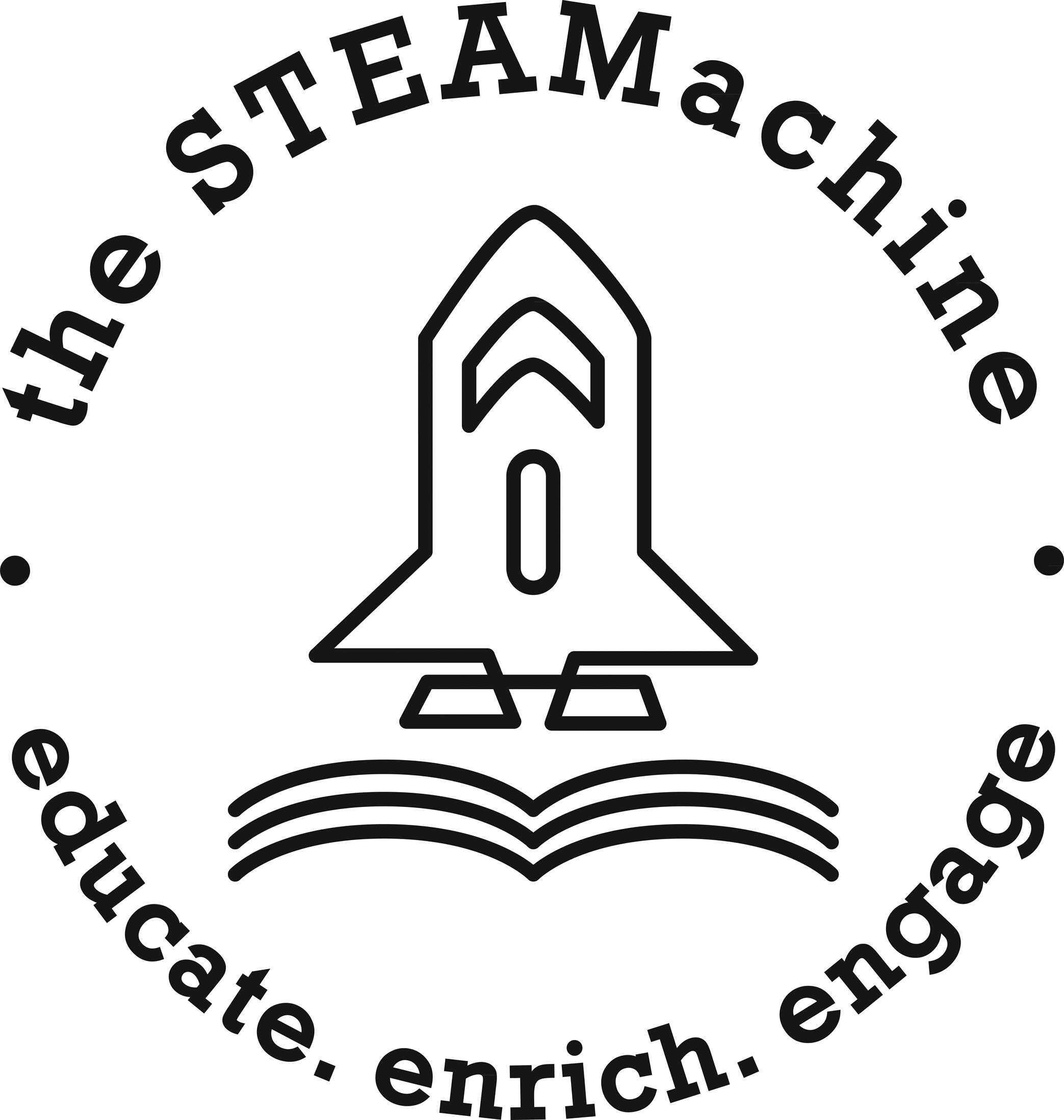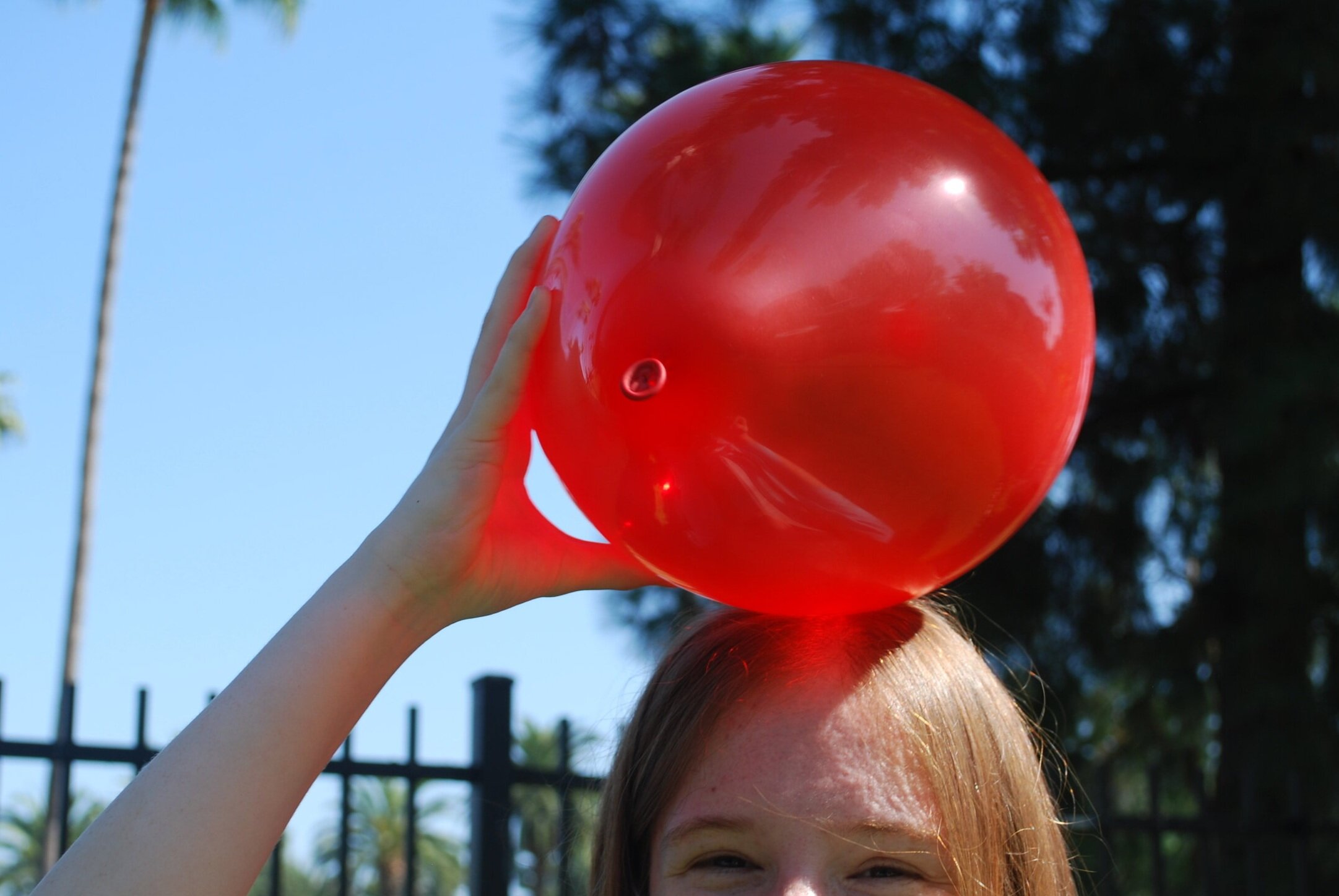Static Dancing Ghost
Create your own ghost and control how it moves using only a balloon and the powers of static electricity!
Standards included in this lesson: 2-PS1-2, CCSS.MATH.CONTENT.K.MD.A.1, CCSS.MATH.CONTENT.2.MD.A.3, CCSS.MATH.CONTENT.2.MD.A.1, 5-PS1-1, 4-PS3-2
Procedure
Step 1
Cut the tissue paper into a ghost shape as shown in the picture about two-three inches long. You can use a marker to add eyes or decorations!
Step 2
Tape the very bottom of the ghost to the table.
Step 3
Blow up and tie the balloon, then rub it in your hair for about 10-15 seconds.
Step 4
Now for the experiment! Bring the balloon near the “ghost” without actually touching it. What do you observe? The ghost should be floating up to the balloon! If you move the balloon around, you can make the ghost dance!
Science Explanation
Kindergarten - 2nd Grade . . .
- Have u ever gotten “shocked” before? Maybe on a windy or dry day and you touch something metal and feel a little zap? You may have heard it being called a static shock. Do you know why this happens?
- It is all because of a little teenie thing called an electron! You may have heard of an atom before...it is a building block that makes up everything around you! Well, atoms are made of even smaller things, one of which is an electron! Electrons are everywhere and are negatively charged.
- When you are out on a dry day, you start to pick up a lot of electrons (they stick to your skin!). Electrons love to be spread out evenly so when you are near something without many electrons, the electrons really want to go to the other object! So that little shock you feel when you touch something else is millions of electrons jumping from you to the object! This process is called static electricity.
- Another example of static electricity is lightning! A storm cloud is made up of millions of small pieces of ice. The ice rubs together and makes static electricity. When there is a lot of static electricity it makes a really big spark which is lightning! It is like the shock that you feel but much bigger!
- In this activity, when you rub the balloon in your hair it collects a lot of electrons. Now that you know how static electricity works, why do you think the ghost floats? When you put the balloon near the “ghost”, which does not have many electrons, the electrons on the balloon are really attracted to the ghost. Since the ghost is really light, it floats up to the balloon trying to touch it so that the electrons can jump between them!
- Try making the ghost smaller or larger or with a different material (paper, tissue, etc) and see what happens! 2-PS1-2
3rd Grade - 5th Grade . . .
- Do you know what an atom is? (answer: small, invisible pieces that everything is made out of) What are some things around you that are made of atoms? Well, atoms are also made up of many smaller pieces. They are made up of three parts which are protons (which have a positive charge), neutrons (which have no charge), and electrons (which have a negative charge). The protons and neutrons are in the center of an atom and the electrons are floating around it! You can think of it like the sun is the ball of protons and neutrons while the planets are electrons, circling around the sun. 5-PS1-1
- Since protons have a positive charge and electrons have negative charge, if there are more protons in an atom it is positively charged and if there are more electrons it is negatively charged. Everything has either a negative charge, a positive charge, or a neutral charge (having the same number of electrons and protons). An atom with a positive or negative charge are called ions which can be broken up into cations(an atom with a positive charge/more protons) and anions(an atom with a negative charge/more electrons)
- For this activity, you should know that opposites attract! Similar to a pair of magnets, positively charged objects are attracted to negatively charged objects as the positive side of the magnet is attracted to the negative side of another magnet! Why do you think this is? This is because all atoms want to become neutral. If a negatively charged object touches a positively charged object it can give some of its electrons away so that both of them become neutral. Think of it like two people who want a half filled glass of water. One person has a full cup and the other has an empty cup. One can share and transfer water to the other person so they both have half cups of water. 4-PS3-2
- Now can you guess why the balloon and the ghost were attracted to each other? Guess which object is positively charged and which one is negatively charged (answer: the balloon is negatively charged, the ghost is positively charged). The balloon is negatively charged because when you rub it in your hair, it collects a lot of electrons. So when you hover it over the positively charged ghost, they are attracted and the ghost will float up!
Math Extensions
Kindergarten - 2nd Grade . . .
- Describe the ghost! Length or weight? CCSS.MATH.CONTENT.K.MD.A.1
- Estimate the length of the ghost and balloon, then use a ruler to see how close your estimate was! CCSS.MATH.CONTENT.2.MD.A.3, CCSS.MATH.CONTENT.2.MD.A.1
Written by Allyson Liu Inspired by: Science Bob





